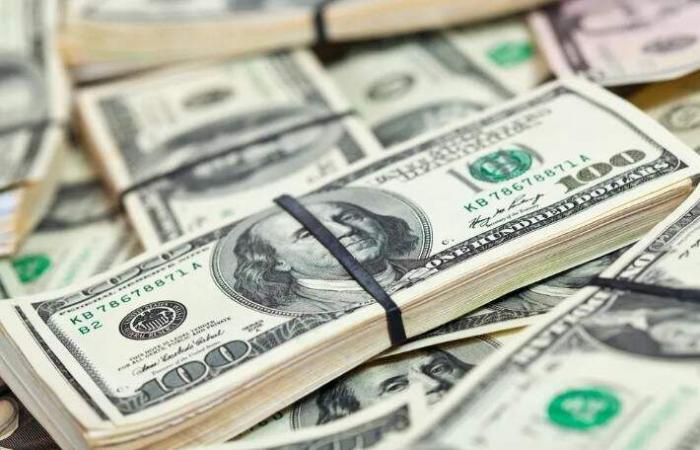The dollar rose this Monday (18) and closed above R$5 for the first time since October, starting a week marked by the announcement of monetary policy decisions around the world, with emphasis on Brazil and the United States.
This Wednesday (20), the central banks of both countries decide what their new interest rates will be. The expectation is that, here, the Selic rate will suffer a further reduction, while in the United States interest rates should remain unchanged.
Still in Brazil, investors are also following the release of the Central Bank’s Economic Activity Index (IBC-BR), considered the “preview” of the Gross Domestic Product (GDP). The indicator rose 0.6% in January, compared to the previous month.
At the end of the session, the dollar rose 0.57%, quoted at R$5.0258. As a result, it accumulated increases of: 0.57% in the week; 1.07% in the month; and 3.57% in the year.
Last Friday, the North American currency rose 0.22%, quoted at R$4.9973.
Ibovespa
Ibovespa, the main stock index on the Brazilian stock exchange, B3, closed up 0.17%, at 126,954 points. With the result, it accumulated: increase of 0.17% in the week; decline of 1.60% in the month; and a drop of 5.39% in the year.
On Friday, the index fell 0.74%, to 126,742 points.
Markets
The week began with investors already looking ahead to Super Wednesday, when the Central Bank of Brazil (BC) and the Federal Reserve (Fed, the North American central bank) are expected to announce their new interest rates.
In Brazil, the Selic rate is at 11.25% per year and the market expectation is that the Monetary Policy Committee (Copom) will promote a new cut of 0.5 percentage points, taking the rate to 10.75% per year .
In the United States, on the other hand, the expectation is that the Fed will keep its interest rates unchanged between 5.25% and 5.50% per year. The attention, however, is more focused on the statement that the institution will release after the meeting, because that is where investors can get a glimpse of the possibilities for rates in the coming months.
There is a lot of market expectation about when the Fed should start the cutting cycle in the United States. Most investors and experts expect this to happen in the first half of this year.
Furthermore, the week began with the release of some important data around the world.
Abroad, China stands out, which had better than expected numbers for industry and retail. In the first two months of 2024, the country’s industrial production grew 7.0%, according to the National Statistics Agency, against expectations of an increase of 5.0%. Retail sales rose 5.5%, against a projected 5.2%.
The numbers brought some relief to markets, which had been worried about a slowdown in the Chinese economy. The result even boosts the performance of iron ore, as the Asian country is one of the main demanders of the commodity in the world.
In Brazil, the BC released the IBC-Br, which showed an increase of 0.6% in January, in line with expectations. Rafael Perez, economist at Suno Research, highlights that this is the fifth positive result in a row and “reveals stronger activity at the beginning of the year”.
“Furthermore, Caged data released on Friday, with the creation of 180 thousand job vacancies in January, showed a job market that continues to show very positive signs and will be an important vector for sustaining activity, especially in segments linked to consumption”, comments the economist.
Still in the domestic scenario, highlight is the report released by the National Treasury last Friday, with projections that the Federal Government should be able to meet the target of zero deficit in 2024, if it manages to approve the measures already proposed by the economic area to increase revenue.
For the next few years, in 2025 and 2026, the Treasury projects a deficit of 0.5% and 0.4% of GDP, respectively. A deficit occurs when expenses exceed revenues, increasing public debt.
If the Treasury’s projections come true, the government will no longer meet the fiscal target established for 2025 and 2026, since the targets projected for these years in the Budget Guidelines Law (LDO) of 2024 are a surplus of 0.5% and 1% of GDP, respectively.
However, for now, these expected deficit numbers are nothing more than projections. Alex Agostini, chief economist at Austin Rating, points out that “it makes no sense at all for the government to change the fiscal target now” and that this would be “a shot in the foot”.






